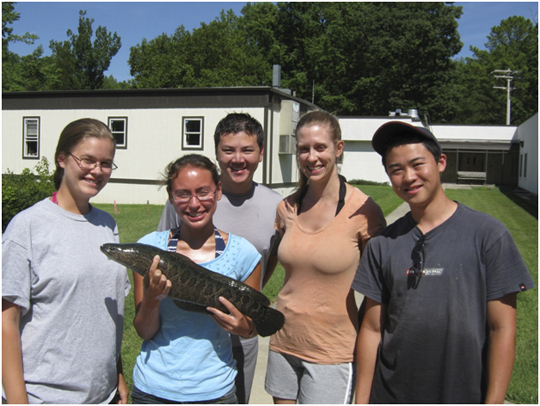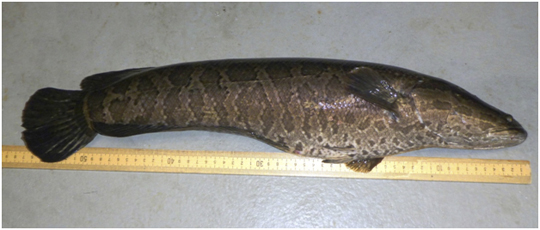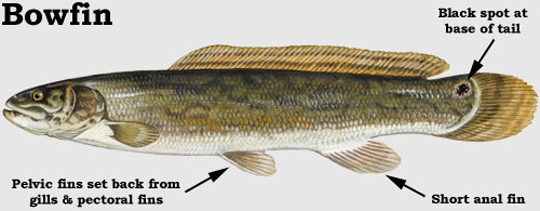Wanted dead, not alive
A team of researchers and student summer interns from the Smithsonian Environmental Research Center in Edgewater, Md., discovered a northern snakehead (Channa argus) fish in the Rhode River in mid-July. This is the first report of this invasive species in this area, and may indicate a recent range expansion of the snakehead population.
Native to China, the first northern snakehead in Maryland was reported in 2002 in a Crofton pond, approximately 20 miles east of Washington, D.C. That population was eradicated, but a separate introduction occurred in the Potomac River in 2004, which led to the establishment of the northern snakehead in creeks and upper waterways of the Potomac in Maryland and Virginia.
The snakehead was caught during routine sampling at a long-term study site using a seine net. It represents the only specimen recorded for the Rhode River site in decades of such surveys. The fish was a mature female, 58 cm (23 inches) in length, caught near the headwaters of the Rhode River.
The northern snakehead is typically found in freshwater, although it can tolerate low salinity waters. It was thought that higher salinity at the mouth of the Potomac may act as a natural barrier, serving to limit or reduce the fish’s spread to other tributaries. Due to extremely high levels of spring runoff in Upper Chesapeake Bay this year, salinities in Chesapeake tributaries are at some of their lowest levels in the last 30 years. This has potentially allowed the fish to move out of the Potomac and travel to other rivers via Chesapeake Bay.

The research team who caught the snakehead included research biologists Eric Bah and Stacey Havard, interns Philip Choy and Diana Sisson and visiting student Alison Everett.
Unlike most fish, the northern snakehead can survive up to four days out of water if kept moist. This ability comes from air chambers above their gills that act as a primitive lung. They are top-level predators with the ability to consume other fish and animals up to one-third of their own body size. Northern snakeheads may cause declines in local fish and other organisms, causing potential changes to the food web.
Research team members were research biologists Eric Bah and Stacey Havard, interns Philip Choy and Diana Sisson and visiting student Alison Everett. Information on this and other non-native species in Chesapeake Bay can be found at SERC’s website.
Movement or possession of a live northern snakehead fish is a violation of Maryland law. People are asked to kill any northern snakehead fish they catch and contact the Maryland Department of Natural Resources or the Virginia Department of Game and Inland Fisheries:
Maryland
Maryland Department of Natural Resources: (410) 260-8320 or toll-free at 1(877) 520-8DNR, ext. 8230.
Virginia
Virginia Department of Game and Inland Fisheries in-state, toll-free at 1(800) 770-4951. Out-of-state callers reporting snakehead fish caught in Virginia waters should call directly to (804) 367-1258.
To learn more, visit the Maryland Department of Natural Resources, Virginia Department of Game and Inland Fisheries or U.S. Fish & Wildlife Service.
Northern snakehead
Similar-appearing native species
Posted: 9 August 2011







Just a thought… I heard there were some good recipes out there for snakeheads and they can be fishhed in MD @ any time with no restrictions…possibly that should be addded in a follow-up article